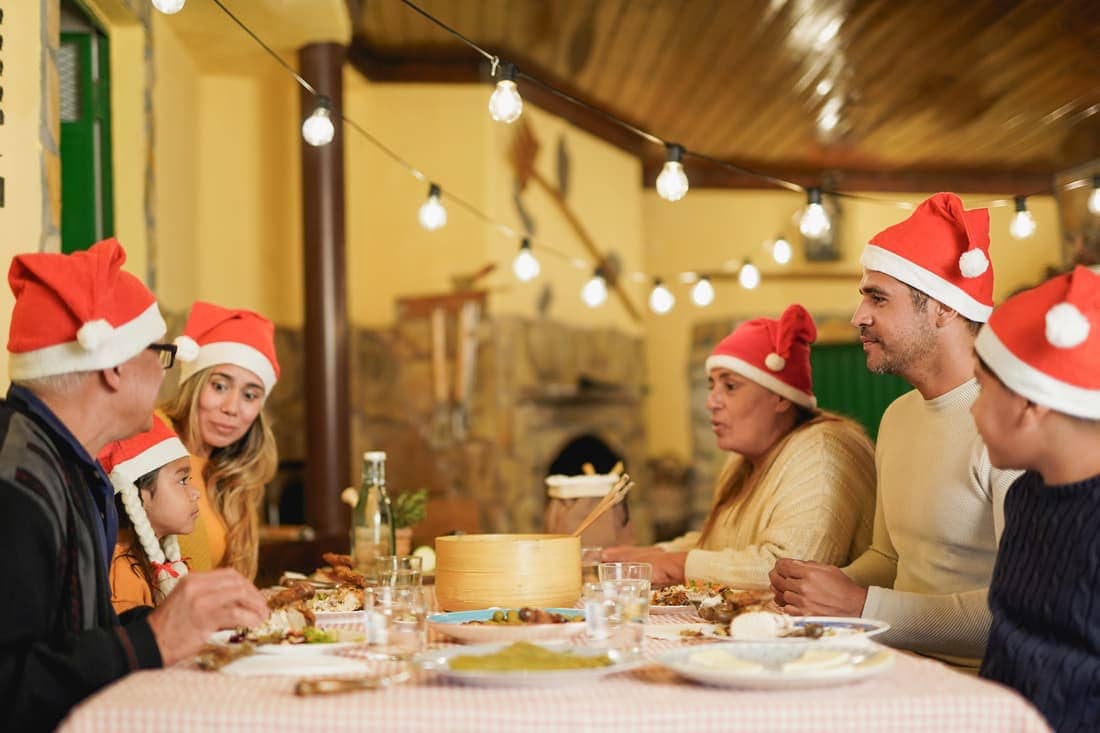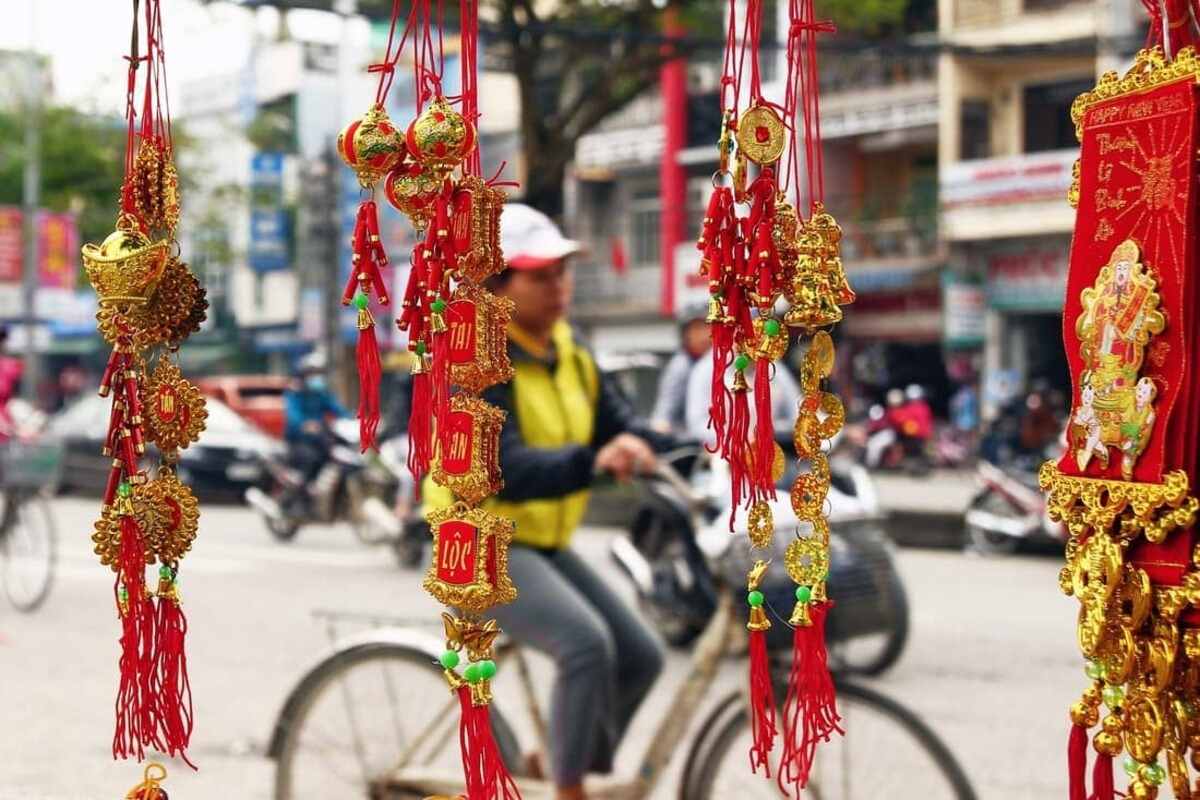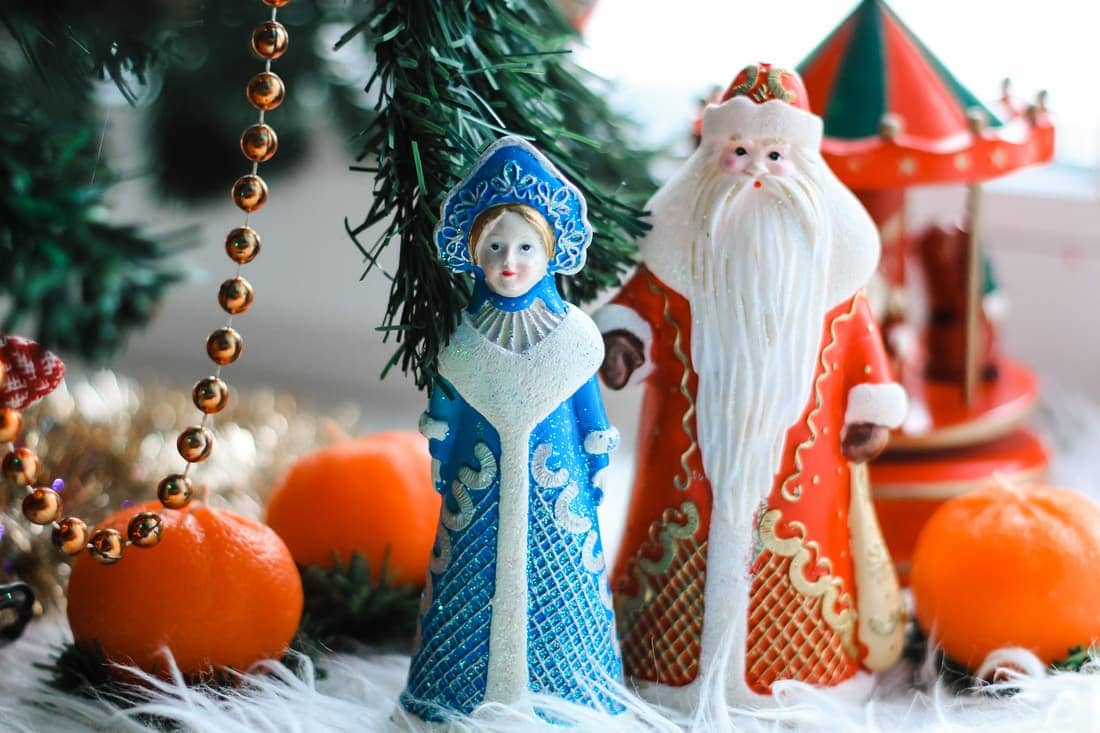Christmas Day and Christmas Eve Traditions Around the World
Christmas is celebrated in all four corners of the world, but each country adds its own unique traditions and flavor. How some countries celebrate might be shocking while in others you may feel like you’d be right at home. In the spirit of unity and acceptance, let’s learn about some Christmas Day and Christmas Eve traditions in other countries.
KFC for Christmas in Japan?
Christmas is not an official holiday in Japan, although it is widely celebrated in the country. But the Christmas traditions in Japan are quite unique. For one, KFC (yes, Kentucky Fried Chicken) is the unofficial Christmas meal in Japan. People need to place orders well in advance or wait for hours to get the meal.
Then, the Japanese love illumination. Everything is illuminated and decorated from head to toe. While these decorations aren’t necessarily Christmas-themed, they are winter-themed, so it works just as well. Similarly, Christmas trees aren’t traditional, but many homes and businesses will illuminate Christmas trees to go with the overall aesthetic.
Christmas also works as a sort of Valentine’s Day in Japan. Couples get together, have romantic dinners, gaze at the light displays, and exchange gifts. However, family gift-giving is mostly reserved for New Year’s and is not traditional on Christmas Day except for couples.
But the Japanese do have a version of Santa Clause; for some, he is simply Santa-san, while for others the role of Santa is fulfilled by Hotei-osho, a rotund Buddhist monk with a big belly and a bag full of gifts.
Or a Whole Month of Christmas Celebrations in Mexico?

Or a Whole Month of Christmas Celebrations in Mexico?
Christmas is big in Mexico. So much so that it’s not just Christmas Eve and Day that are celebrated, but the celebration starts on December 12th and lasts until January 6th. And there are so many traditions, both local and national, that’s it’s hard to keep track of them all, so we’ll list just a few.
The 12th of December is the Day of the Virgin of Guadalupe when pilgrims visit the Church of Guadalupe to give homage to the Virgin Mary. Fireworks, parades, and all sorts of festivities are held on the 12th.
The days from the 16th to the 24th are called Posadas. People re-enact Mary and Joseph searching for shelter and children go from house to house singing songs and asking the homeowners to let them in.
Christmas Eve and Christmas Day are family- and religious-oriented in Mexico. Families will gather for dinner and attend Midnight Mass. Poinsettia flowers are the most common decoration during Christmas.
The 6th of January is Three Kings Day and it is when Mexican children traditionally receive gifts. A sweet bread, called ‘Rosca de Reyes’ is made and a Jesus figurine is hidden inside – the one who finds it gets to host the Candlemas party on February 2nd.
But what about Santa Clause and Christmas trees? Neither were traditionally popular in Mexico but are becoming more common. So, it’s not rare to see decorated Christmas trees and children receiving gifts on Christmas from Santa as well as the traditional gifts on Three Kings Day.
Christmas is a Now an Official Holiday in Iraq
Although not a Christian-majority country, Iraq has a centuries-long tradition of celebrating Christmas. However, if we only look at the last few decades, Christmas was officially celebrated for the first time in 2008 as a one-time holiday. Then in 2018, an amendment that makes Christmas a national holiday was introduced and ratified in 2020.
Thus, Christmas Day (the 25th of December) has been a national holiday in Iraq since 2020. But how do the Iraqis celebrate Christmas?
The celebration starts on Christmas Eve. The family gathers in the courtyard of their home and dried thorns are placed in one corner. The children read the story of the Nativity while the other family members hold lighted candles.
After the reading is finished, the thorns are lit and psalms are sung while it burns. It is considered a good omen if the thorns burn to ashes. Once the fire is out, the family members jump over the ashes three times and make wishes.
On Christmas Day itself, religious services are held in the churches. Bonfires are lit and hymns are chanted as the fires burn. Once the service is finished, the priest touches a person with the ‘Touch of Peace’. That person then touches the one next to him or her and so forth until all participants have received the touch.
Christmas celebrations in Iraq are much more subdued than what would be normal for the US. Christmas trees are rare, as are decorated houses or fireworks. It is more of a family- and religion-oriented holiday and tends to be less extravagant. But they do have a Father Christmas that brings gifts; he is called Baba Noel or Vader Karsfees, depending on whom you ask.
Ready to sell?
Are you ready to sell your currency? Stop waiting and request a Shipping Kit. We will provide everything you need to ship and receive funds for currencies you own.
It’s Always Sunny for Christmas in New Zealand
Christmas comes in the middle of summer in New Zealand, so a lot of people spend it on the beach or camping. But because of the origins of New Zealand, many traditions are similar to North American or British ones. So, Christmas Eve falls on the 24th and Christmas Day on the 25th, and Boxing Day is also celebrated.
And New Zealander’s usually display and decorate a Christmas tree, but it’s just as likely to be a pōhutukawa tree as it is to be a traditional Christmas tree. Biblical and winter imagery is used alongside native plants and ferns. And you can eat turkey alongside summer fruits and veggies. In short, Christmas is an interesting mix of summer and winter motifs in New Zealand.
It’s only questionable how Santa Clause can handle carrying presents to New Zealand, as he wears the traditional thick red clothing and rides his reindeer sled. Plus, he often delivers jandals, a type of flip-flop, as a gift. Which is probably appropriate given the hot weather.
Celebrating Christmas in Vietnam Is Almost Like You’re Home

Not a lot of Christians live in Vietnam and Christmas isn’t recognized as an official holiday, but it is a rather big secular celebration. If an American were to go to Vietnam for Christmas, they would feel quite at home in most major cities with the decorations and the Christmas ambiance. But, of course, the Vietnamese also have some unique Christmas traditions.
Although throwing confetti, having drinks and food, taking pictures, and overall partying take up the majority of people’s time on Christmas Eve, religious services aren’t totally excluded. There are Christian churches spread across Vietnam and the traditional Nativity scenes are displayed.
A Catholic cathedral in Ho Chi Minh, the Notre Dame Cathedral, and one in Hanoi, the Saint Joseph Cathedral, are popular locations where both religious and non-religious people go to watch the Nativity plays and participate in Midnight Mass.
The Christmas traditions in Vietnam are heavily influenced by French traditions, as Vietnam was a French colony in the past. The Christmas Eve dinner is called ‘revellion’, a French custom. It often includes ‘bûche de Noël’, a chocolate cake shaped like a log. As far as gift-giving goes, food is a common gift and the bûche de Noël is particularly popular.
Santa Clause is also part of Vietnamese Christmas. He wears the traditional red suit and many kids like to dress up as Santa for Christmas. In Vietnamese, Santa is called ‘Ông già Noël’, which literally means Christmas old man. If you go to Vietnam and want to wish someone a Merry Christmas, say ‘Chúc Mừng Giáng Sinh’!
Turkey with Chilli and Ginger for Christmas in Singapore?
Celebrating Christmas Eve and Christmas is very popular in Singapore. And like Christmas in Vietnam, an American wouldn’t be out of place in Singapore for Christmas. They have all the traditional fanfare – lights, decorations, Christmas trees, fireworks, etc. There is also a theme park dedicated to Christmas in Singapore, called Christmas Wonderland.
Going out for meals and shopping is extremely popular around Christmastime – especially on the famous shopping belt the Orchard Road. And the appropriate Christmas-themed items and Christmas food can be found in shops and restaurants all across the island.
But all of it has a bit of twist – for example, you’ll find turkey everywhere, but it’ll often be spiced with ginger and chilly. So, Christmas in Singapore is both like Christmas in the US, but also unique, with a Singaporean twist. There are also religious services held on Christmas Eve, where both Christians and non-Christians are welcome.
It’s Easy to Choose Christmas Gifts in South Korea
Unlike most East Asian countries where Christmas is celebrated but is not a national holiday, Christmas is an official public holiday in South Korea. Christmas Eve is celebrated on the 24th and Christmas on the 25th.
Religious services are widely held, everything is decorated in Christmas colors, and malls and stores all sell Christmas merchandise. Christmas trees might be somewhat rarer than in the US, but they are still rather common.
However, Christmas isn’t considered a purely family-oriented holiday, so most people will celebrate it with their partners, instead of traveling far for family get-togethers. And many westerners might be surprised with the look of Santa Clause and traditional gifts.
So, Santa does exist and he may wear the traditional red. But you are just as likely to find a Santa Clause dressed in blue. And one of the most common Christmas gifts is money. While standard presents aren’t necessarily rare, gifting money is very common. That makes Christmas shopping in South Korea a bit easier, doesn’t it?
It’s All About Christmas Eve Traditions in Brazil
Brazil celebrates Christmas Eve on the 24th and Christmas Day on the 25th, but that’s the middle of the summer for Brazilians, so a lot of the festivities are influenced by that. Otherwise, the basis of Christmas is similar to the US – large families gather to enjoy each other’s company and share gifts.A type of secret Santa tradition, called ‘Amigo Oculto’, is popular in Brazil. It mostly works like regular secret Santa – one person secretly buys a gift for another, but the gift-giving part itself is different. The gift-giver describes the gift-receiver until the people guesses who it is and then gives the gift.
Christmas Eve is the main celebration, with partying, lots of food, drinking, dancing, and all sorts of festivities. Christmas Day is more subdued and family-oriented, often with eating the leftovers from the Christmas Eve dinner.
The Orthodox Christmas in Russia

Christmas is a public holiday in Russia, but it’s not celebrated on the 24th and 25th. Instead, Christmas Eve in Russia falls on the 6th of January and Christmas Day on the 7th, in accordance with the Julian calendar. It’s a somewhat subdued holiday meant for focusing on family.
Maybe it’s because it comes after the big New Year’s celebration that already has many similarities to traditional Christmas. In short, celebrating Christmas was banned or strongly discouraged by the Soviet Union for a large part of the 20th century. So the people transplanted a lot of the Christmas traditions to New Year’s Eve and Day.
But you’ll still find all the traditional trappings of Christmas – from Christmas trees and religious services to traditional Christmas food. But no presents. That’s because Ded Moroz, the Russian Santa, and his granddaughter Snegurochka bring presents on New Year.
Norway, Christmas, and Lutefisk
On the face of it, Christmas in Norway is much like traditional Christmas in the US. You’ll find gingerbread houses, wreaths, stars, decorated Christmas trees, and standard Christmas decorations all across city squares and houses. But, naturally, Norway also has some unique traditions.
One of those is a type of trial-Christmas Eve on the 23rd, where a lot of families gather to decorate Christmas trees and make gingerbread houses. Christmas Eve is the main event where most families gather to have dinner and open presents. And they know it’s time to gather because bells ring at 5 PM on the 24th to announce Christmas.
Most pubs, coffee shops, and restaurants are closed for Christmas Eve, as it’s a stay-at-home celebration. But if you were to visit Norway thinking it’s all the same and sat down to eat Christmas food, you’d likely end up… surprised. One traditional meal is lutefisk.
That’s dried cod (or sometimes other types of white fish) soaked in lye – the same chemical solution often used as a basis for cleaning supplies. There’s a running joke that half of the Norwegian immigrants to the US immigrated to escape lutefisk, while the other half came to spread the taste. In short, it’s an acquired taste, but as many love it as hate it.
On the other hand, you’ll also find standard, traditional meals that are not so… exotic, like turkey, ham roast, or pork ribs. There is also a special type of beer called juleøl that is usually available from November onwards.
And Norway’s Santa Clause is a bit different. His name is Julenisse and he doesn’t come down the chimney but enters the front door. Plus, he often lives in a nearby forest or field, instead of the North Pole. And he doesn’t eat cookies, but rice porridge with cinnamon and sugar that the kids leave out.
Planning on Visiting Some of These Countries?
If you plan to visit one of these countries to participate in the Christmas festivities or send some gifts to family or friends, you can buy the local currency online at US First Exchange. Order the currency of your choice and we will deliver your package within 24 – 48 hours, just in time for Christmas.
Ready to buy?
Are you ready to buy your currency? Stop waiting and request a Shipping Kit. We will provide everything you need to ship and receive funds for currencies you own.


